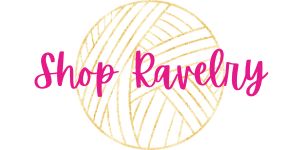This is a free crochet pattern and video tutorial showing how to crochet the Haylee Rectangle Shawl, an easy half double crochet shawl pattern.
This post contains affiliate links for Etsy, Lion Brand, WeCrochet, and LoveCrafts. If you make a purchase by clicking on them, I make a small commission at no extra cost to you. Thanks for your support!
Find the free crochet pattern instructions below, or purchase a printer-friendly, ad-free PDF on Ravelry by clicking here.
In a hurry? Pin this for later when you have more time!

I found myself one evening looking for a fun, easy project that I could do while cuddling with my cats and watching TV. I took a peek at my yarn stash, and I found I had several skeins of Emma’s Yarn Washable Worsted in the Set Sail colorway – enough to make something larger than a scarf, but not quite enough for a sweater so I decided a cozy, rectangle shawl would be perfect!

Haylee is an easy crochet line that features simple half double crochet stitches. This is a beginner friendly series, and this shawl is great project to pair with watching your favorite TV show or movie. Use a soft tape measure to measure as you go, and stop at the length desired.
I worked my scarf up in one solid color, but feel free to experiment with what you have in your stash. Projects like these are great for working striping patterns (or using striping yarns), or color blocks, like my Shay Scarf.
Matching Pieces You’ll Love to Pair with Your Haylee Rectangle Shawl
Find more Haylee accessory and home decor crochet patterns on EyeLoveKnots, and Haylee accessory and wearables crochet patterns here on Cre8tion Crochet.

Make a matching Haylee Beanie, also worked in simple half double crochet stitches.

Or some cozy Haylee Slippers for lounging around the house.
Other Worsted Weight Shawl Crochet Patterns You’ll Love


What is the different between a Shawl, a Stole and a Wrap?
A Shawl, Stole and Wrap all describe a rectangular, square or triangular accessory that is draped over the shoulders or wrapped around the body.
A shawl is more casual, and is either worn to accent an outfit, to provide warmth or for religious purposes.
A stole is a more formal shawl used to accent an outfit, and is usually more narrow than a shawl, and made of more expensive materials like silk and cashmere.
A wrap encompasses both a shawl and stole. It’s a more casual, modern term that simply describes any accessory that can be draped over the shoulders or wrapped around the body.
Are Shawls and Scarves the same?
Shawls and Scarves both describe an accessory that can be draped over the shoulders, or wrapped around the neck and body, depending on the size.
Typically, a scarf is often more narrow than a shawl by at least half or more, and solely wrapped around the neck, rather than the body, either to accent an outfit or to provide warmth, but there are several different types of scarves, like super scarves and blanket scarves, that are much wider and can definitely be used to cover the shoulders or wrapped around the body.
I’ll get into a little more detail when I get into the sizing, but one thing I love about making my own shawls and scarves is being able to customize the width and length to fit the exact way I like to wear them.
What is the best yarn to use to crochet a shawl?
I’ve used Emma’s Yarn Washable Worsted for my shawl. This is a really lovely, 100% superwash merino wool that is hand dyed at my local yarn shop, Four Purls, in Winter Haven, Florida. It’s soft, squishy, not itchy and simply beautiful! Similar yarns are going to be Lion Brand Wool Ease and WeCrochet Swish, but you can use your favorite worsted weight yarn out of your stash! If the finished size is essential to you, then check your gauge, but if not, then just start crocheting – you can even go up to a #5 chunky weight yarn for an even cozier, oversized shawl.
What size should a rectangle shawl be?
The average sizes of rectangle shawls are 15″ wide by 60″ long, 18″ wide by 72″-75″ long, and 20″ wide by 80″-100″ long. It really all depends on your preferences, like if you like to wear it more like a scarf or wrap around your shoulders and arms, and how much overhang you like on your shawl.
Personally, I try to keep the overhang to a minimum as the shawl can get heavy with worsted weight yarns, so I opt for 15″ by 60″ for a shawl I will wrap around my shoulders and pin. For reference, I have a 42″ bust and wear a ladies size L / juniors size XL top – the fit is a little different based on bust and arm circumference measurements, which may affect your choice of length.
When you think of the circumference of your bust and arms together, it’s roughly 10″ larger than your bust. In my case, that would be 52″ in circumference. With a 60″ length, that leaves 8″ to overlap and drape. If you were a size Extra Small with a 28″ in bust, plus the 10″ extra for the arms, that would bring you to 38″. Perhaps you’d want to adjust to say a 45″ shawl to wrap around your shoulders.
For a shawl that I will wear more like a scarf, I opt for 15″ by 70″. For reference, I like to make my regular scarves 60″ in length, and I always feel like (I think due to the extra fabric/bulkiness) rectangle shawls worn the same way need just a little extra length to wrap around the neck once, and have a nice amount of fabric hanging on either side. I am 5’6″. If you’re shorter, you may want a shorter shawl length, and if you’re taller, you may want a longer shawl length.

Do I need to work a border around my shawl?
I was happy with the shape and edging of my rectangle shawl so I did not add a border, but for a more finished edging you absolutely can add one! If you opt to work a border, keep in mind, a simple single crochet border will add about 3/8″ – 1/2″ to width and height, and any other stitch patterns or additional rounds will add more. The finished size is not essential so you do not have to adjust the stitch count if you don’t want to, or you can omit a few stitches from the shawl to account for the additional width and height – completely up to you! I will provide instructions for without a border, and with a single crochet border in case you’re interested.
Why is my border wavy or ruffled? How do you fix a wavy or ruffled border?
In my experience, a change in tension causes ruffles in the border, especially seen on the sides. My quick fix is to simply go down a hook size. You can also continue with the same hook you’ve been working with, and just block the finished shawl.
Behind the Scenes of Cre8tion Crochet:

My biggest fan, Shiloh <3
I snapped these photos back in September. This was the last project my sweet boy worked on with me. He is no longer with me, but it warms my heart to have these precious photos.
Ad-Free Printer Friendly PDF:

If you would like a PDF version of this post, you may get one through either my Etsy Shop, Ravelry Shop or LoveCrafts Shop for a small fee. This fee is to compensate for the views lost when you no longer need to return to the blog to for the information, as you will have your own copy. In a hurry? Pin this for later when you have more time!

Save this to Your Favorites On: AllFreeCrochet, FaveCrafts, Crochet Pattern Bonanza, Cheap Thrifty Living, DIYideaCenter, AllFreeHolidayCrafts, Free Crochet Tutorials
What Supplies Do I Need to Crochet a Rectangle Shawl?
- 820 (1210, 1790) Yards of Worsted Weight Yarn – I used Emma’s Washable Worsted in the Set Sail colorway
- Main Part: H8/5mm Crochet Hook – I love my ergonomic hooks from SiennasBowtique on Etsy
- Border Only: G6/4.25mm Crochet Hook
- Tapestry Needle
- Optional: Soft Tape Measure (if gauge is essential or to measure as you go)
- Optional: Locking Stitch Markers
Material Notes:
Similar Wool/Wool Blend Yarns: Lion Brand Wool Ease, Berroco Vintage, WeCrochet Swish
Similar Non-Wool Yarns: Premier Yarns Everyday Soft, Lion Brand’s Heartland, WeCrochet Brava
Why switch to a smaller crochet hook for the border? In my experience, a change in tension causes ruffles in the border, especially seen on the sides. My quick fix is to simply go down a hook size. You can also continue with the same hook you’ve been working with, and just block the finished shawl.
I like to use locking stitch markers to help me keep track of the number of rows I’ve worked. I place them every 50 rows.
How Long Does it Take to Crochet a Rectangle Shawl?
I worked up the 15″ by 60″ in about 11 and a half hours.
Measurements – Width by Length:
- 15″ x by 60″
- 18″ by 75″
- 20″ by 100″
These sizes are average adult sizes. It really all depends on your preferences, like if you like to wear it more like a scarf or wrap around your shoulders and arms, and how much overhang you like on your shawl.
Gauge (Not Essential):
16 HDC by 12 Rows = 4 1/8″
A really easy way to check your shawl is to measure after about 6 rows. This will be the finished width of your shawl (unless you add a border). It’s so easy to work up until you reach the length that you like, and you don’t even need to count your rows – you can measure as you go with a tape measure.
Abbreviations (US Terms):
- HDC – Half Double Crochet (Photo Tutorial)
- SC – Single Crochet (Photo Tutorial)
Pattern Notes:
There isn’t a particular stitch or row multiple for this shawl so if you’d like to alter the width, simply remove or add any number of chains. To alter the height, simply remove or add any number of rows.
Beginning chain 1 does not count as a stitch.
With turning each round, any side can be the right side/wrong side. When adding a border, I consider the side I’m working the first round on to be the right side (or front) as the stitches look prettier and more defined from this side. Regardless of whether you add a border or not, I do recommend bringing your tail ends all to one side so they’re all woven in on the same side.
Why switch to a smaller crochet hook for the border? In my experience, a change in tension causes ruffles in the border, especially seen on the sides. My quick fix is to simply go down a hook size. You can also continue with the same hook you’ve been working with, and just block the finished shawl.
For more rounded corners on the border, work a chain 1 instead of chain 2, or work 3 single crochet. For more square corners, work as instructed in the pattern, or work (SC, HDC, SC).
Feel free to add additional rounds to the border if desired. I think working a few rounds of single crochet in the back loop only really adds a nice touch – see an example in my Lightweight Grace Tinley Beanie. Just make sure to continue to increase in the corner chain space as you go.
Through 01/17/24 at 11:59pm EST, you can grab a free copy of the PDF for the Haylee Rectangle Shawl on Ravelry using code FREECROCHET202403. I earn my income from the number of pageviews my blog sees, so please do not share the code, but instead share the link to this post so others can find it. Thank you!
Haylee Rectangle Shawl, Video Tutorial:
Haylee Rectangle Shawl, Written Crochet Pattern:

Rectangle Shawl without Border:
Chain 60 (71, 79). HDC into the 3rd chain, and each chain across. [59 (70, 78) HDC]
R2 – 176 (220, 293): Chain 1, turn. HDC into the 1st HDC, and each HDC across. [59 (70, 78) HDC]
Fasten off, and weave in ends.
Rectangle Shawl with Single Crochet Border:
Chain 57 (69, 77). HDC into the 3rd chain, and each chain across. [56 (68, 76) HDC]
R2 – 174 (218, 291): Chain 1, turn. HDC into the 1st HDC, and each HDC across. [59 (70, 78) HDC]
Optional Border – switch to G6/4.25mm crochet hook:
Chain 1, turn. SC into the first stitch, and each stitch across, (SC, chain 2, SC) into the last stitch to form a corner, evenly SC (that’s 3 stitches per 2 rows) down the side of the shawl to the last stitch, (SC, chain 2, SC) into the last stitch to form a corner, SC across the opposite side of the foundation chain over to the last stitch, (SC, chain 2, SC) into the last stitch to form a corner, evenly SC (that’s 3 stitches per 2 rows) up the side of the shawl to the first stitch. SC into the same stitch as the first, chain 2, then slip stitch join to the 1st SC.
Fasten off, and weave in ends.

Feel free to use this information to make and sell your own items. When sharing, designer credit is appreciated, but not required. All Cre8tion Crochet Patterns, Photos and PDF’s are protected under copyright. They are not to be copied, distributed or sold – doing so is copyright infringement and stealing! DO NOT copy and paste my pattern anywhere, and DO NOT share the written pattern with others, share the link to the pattern instead so others can find it themselves.

Join one of our awesome Facebook groups to share your creations, and see what others are up to!
– Yarn Crafts & Coffee Community
– DIY Home On Rockwood Lane
– Alexandra Lane Lifestyle










Leave a Reply